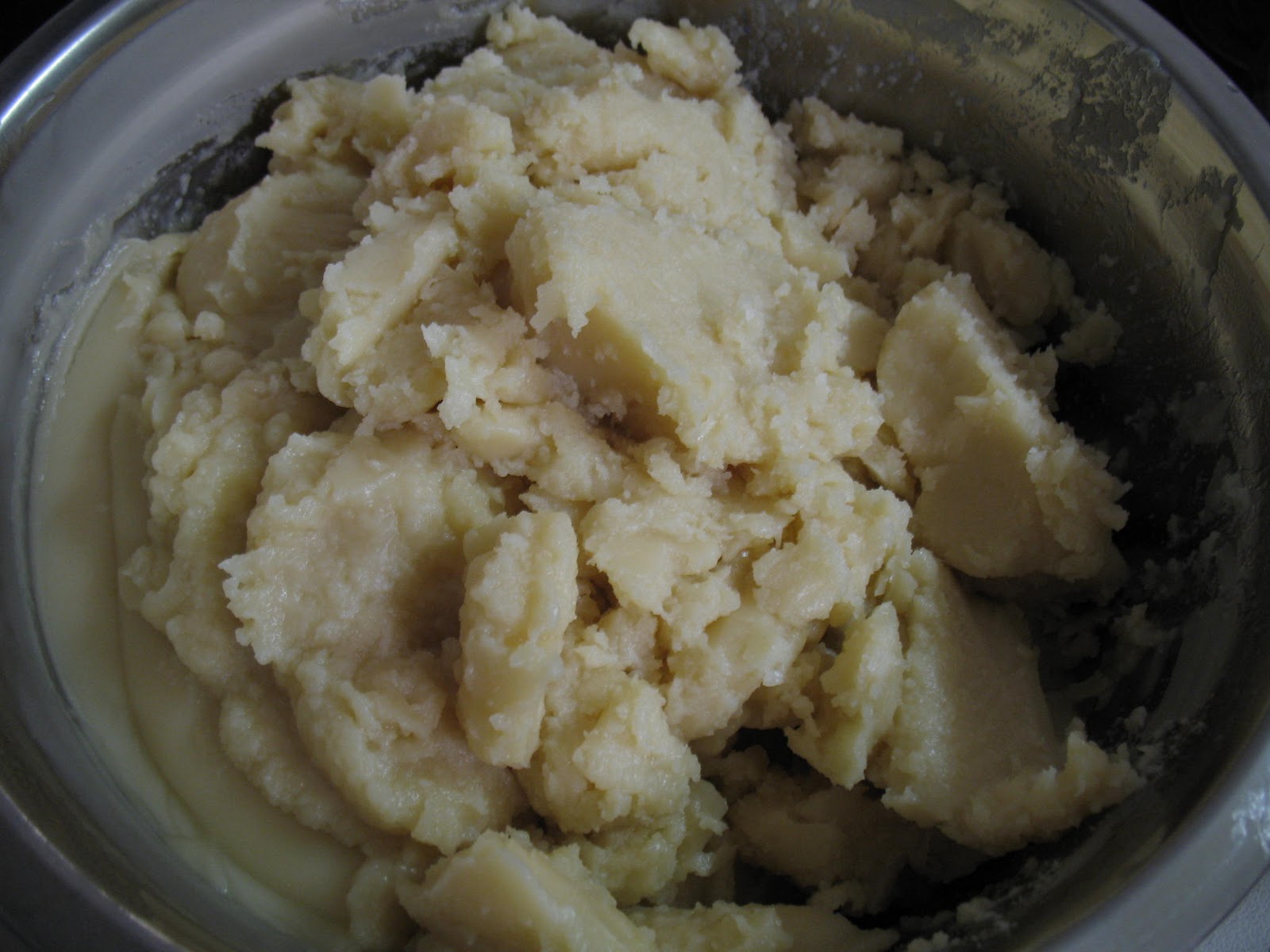Does Fragrance oil made my soap seize?
Yes, some fragrance oils can cause sudden hardening, resulting in a grainy or solid texture.
Possible causes of sudden Seizing :
Temperature variations: Extremely high or low temperatures can accelerate the reaction of fragrance oils, leading to sudden hardening.
Heat from the electric blender: Heat generated by the electric blender can increase the mixture's temperature, accelerating the reaction of fragrance oils and causing sudden hardening.
Other components that may contribute to soap Seizing :
- Sugar: Increases the soap mixture's temperature, potentially accelerating the hardening process.
- Waxes: Contributes to faster thickening of the soap mixture, leading to hardening.
- Jojoba oil: May expedite the hardening process due to its chemical composition.
- Stearic acid: Acts as a thickening agent, potentially accelerating the hardening of the mixture.
- Alcohols: Can raise the soap mixture's temperature, leading to hardening.
- Neem oil: Contains components that may react faster with lye, resulting in soap thickening and hardening.
- Shea butter: While commonly used in soap making, excessive amounts (above 5%) can contribute to hardening.
- Castor oil: When used in high proportions, it may accelerate the hardening process. Therefore, it's recommended to use less than 5% to prevent sudden hardening.
- Cinnamon oil: Contains chemical compounds called cinnamaldehydes, which accelerate the soap hardening process. These chemicals react rapidly with the alkaline mixture in soap, speeding up soap formation and leading to hardening.
- Clove oil: Contains compounds called eugenols, which act as natural bacterial inhibitors. However, these compounds can react with the alkaline mixture in soap, accelerating the soap hardening process.
In conclusion:
- When adding multiple ingredients to the mixture, it can be challenging to control or predict the speed of the saponification or hardening process. Therefore, it is reiterated that the best method is to test a smaller quantity before starting a larger batch. It may be challenging to precisely predict the hardening process when adding multiple components.
- It is recommended to label the fragrance oil based on its hardening properties:
- If it hardens quickly (less than 5 seconds), label it as "difficult."
- If it takes 5 to 10 seconds to harden, label it as "medium."
- If it takes more than 10 seconds, label it as "easy."
How to avoid rapid hardening of the mixture?
- Mix fragrance oils in a small quantity with warm oils before adding lye solution.
- Add fragrances in the early stages to mitigate the risk of mixture hardening.
- Exercise caution when using the electric blender to prevent excess heat production, especially with complex or labeled as "difficult" fragrances.
- Limit the use of ingredients that contribute to mixture hardening, as mentioned above.
How to test fragrance oils?
- Use inexpensive oils to create a test of fragrance oils.
- Test several fragrances together by pouring the soap mixture into separate containers and adding different fragrance oils to each container.
- Observe the transformation and categorize it as difficult, medium, or easy, as mentioned earlier.
- Record the results in a log with the test date, the name of the fragrance oil, batch number on the packaging, and the purchase location.
- Share the information with us to share with others through our website and social media platforms. Get a 10% discount on each test for a new order to encourage information sharing.
This system helps predict the saponification process, especially when using fragrance oils continuously with other materials that also contribute to rapid hardening. Therefore, always label the fragrance oil as a reference during soap making.
هل الزيوت العطرية تجعل الصابون يتجمد بسرعه ؟
نعم بعض الزيوت العطريه تتسبب في التصلب المفاجئ مما ينتج عنه تكون نسيج خشن أو صلب.
الأسباب المحتملة التي تؤدي الى عملية التصلب المفاجئ:
· تفاوت درجات الحرارة:
درجات الحرارة (العالية أوالمنخفضة) جدًا يمكن أن تؤدي إلى تفاعل الزيوت العطرية بشكل اسرع، مما يؤدي إلى التصلب المفاجئ.
· الحرارة الناتجة بواسطة الخلاط الكهربائي :
يمكن أن تؤدي الحرارة الناتجة من الخلاط الكهربائي إلى زياده حراره الخليط مما ينتج عنه تسارع في تفاعل الزيوت العطرية لينتج عنه تصلب مفاجئ للخليط.
مكونات اخرى قد تتسبب ايضاً في تصلب الخليط:.
· السكر:
يمكن أن يزيد السكر من درجة حرارة الخليط الصابوني، مما يؤدي إلى تسارع عملية التصلب المحتمل.
· الشموع:
يمكن أن تساهم الشموع في تكثيف خليط الصابون بشكل أسرع. مما يؤدي إلى التصلب.
· زيت الجوجوبا:
يمكن أن يسرع زيت الجوجوبا عملية التصلب بسبب تركيبه الكيميائي. إذ يحتوي على سلسة استرات طويلة (long-chain esters ) مما يؤدي إلى التصلب.
· حمض الستياريك:
يمكن أن يعمل حمض الستياريك كمكثف فزيادة نسب الاستخدام تنتج عنه تسريع في عملية التصلب للخليط.
· الكحول:
يمكن أن ترفع الكحول درجة حرارة خليط الصابون بالتالي قد تؤدي إلى التصلب.
· زيت النيم:
يحتوي زيت النيم على مكونات قد تتفاعل مع الصودا بشكل أسرع، مما يؤدي إلى تكثيف وتصلب الصابون.
· زبدة الشيا:
بينما تستخدم زبدة الشيا عادة في صناعة الصابون، يمكن أن تسهم كميات زائدة (أكثر من 5%) التصلب.
· زيت الخروع :
يمكن أن يسرع زيت الخروع عملية التصلب السريع عند استخدامه بنسب عالية. لذا نفضل استخدام نسبة أقل من 5٪ لمنع التصلب المفاجئ للخليط.
· زيت القرفة :
يحتوي زيت القرفة على مكونات كيميائية تسمى الكينامالدهايد، وهي تسرع عملية تصلب الصابون. هذه المركبات الكيميائية تتفاعل بشكل مباشر و سريع مع الخليط القلوي الموجود في مزيج الصابون، مما يسرع من تكوين الصابون ويؤدي إلى تصلب الخليط.
· زيت القرنفل:
زيت القرنفل يحتوي على مركبات تسمى اليوجينولات، وهي تعتبر مثبطًا طبيعيًا للبكتيريا. ومع ذلك، يمكن أن تتفاعل هذه المركبات مع الخليط القلوي الموجود في مزيج الصابون لتسرع عملية تصلب الخليط.
في الختام, عند إضافة أكثر من مكون إلى الخليط، قد يكون من الصعب أحيانًا التحكم او التنبؤ بسرعه عملية التصبن او التصلب، لذا نكرر مرة أخرى على أن أفضل طريقة هي اختبار كمية أقل قبل البدء في عمل كمية أكبر. يمكن أن يكون من الصعب تنبؤ عملية التصلب بدقة عند إضافة مكونات متعددة.
لذا، يُفضل وضع علامة على الزيت العطري استنادًا إلى خصائص التصلب:
- إذا تصلب بسرعة (أقل من 5 ثوانٍ)، قم بوضع علامة "صعب".
- إذا استغرق 5 إلى 10 ثوانٍ للتصلب، قم بوضع علامة "متوسط".
- إذا استغرق أكثر من 10 ثوانٍ، قم بوضع علامة "سهل".
سيساعد هذا النظام البسيط في التنبؤ بعملية التصلب، خاصة عند استخدام زيوت عطريه باستمرار مع مواد أخرى تسهم ايضاً في التصلب السريع. لذا، قم دائمًا بوضع علامة على زيت العطر المستخدم كمرجع لك أثناء صنع الصابون.وللحفاظ على درجات حرارة مثلى لمنع تفاعل الزيوت العطرية بشكل سريع.
كيف يمكنني تفادي عمليه التصلب السريع للخليط ؟
1. مزج الزيوت العطرية في كمية صغيرة مع الزيوت الدافئة قبل إضافة محلول الصودا الكاوية.
2. إضافة العطورفي المراحل المبكرة للتخفيف من مخاطر تصلب الخليط.
3. توخي الحذر عند استخدام الخلاط الكهربائي لمنع إنتاج حرارة زائدة، خصوصًا مع الزيوت العطريه المعقدة او ماتحمل علامة "صعب".
4. الحد من استخدام المكونات التي تتسبب في تصلب الخليط كما ذكر اعلاه
كيف يمكنني اختبار الزيت العطري ؟
1. استخدم زيوت غير مكلفة الثمن لعمل اختبار الزيوت العطريه
2. قم باختبار عدة عطور معاً , فعندما يكون الخليط جاهز قم بسكبه في حاويات صغيره منفصله واضف في كل حاويه زيت عطري مختلف
3. راقب التحول وابدأ بعمل الملصقات من صعب ومتوسط وسهل حسب ماذكر مسبقاً
4. قم بتسجيل النتائج في سجل مختلف بتاريخ الاختبار واسم الزيت العطري ورقم الدفعه الموجوده على العبوه ومكان الشراء
5. قم بمشاركتنا المعلومات لعرضها على جميع العملاء ونشرها باسمك في الموقع الإلكتروني ومنصات التواصل الاجتماعي واحصل على 10% خصم على طلبك الجديد ليتسنى لنا مشاركه الفائده مع الجميع



